How to Translate YouTube Videos (Subbing & Dubbing)
Here are the three top ways to translate YouTube videos in 2024: Auto-translate, Subtitle translation, and dubbing. We break down each in a step-by-step tutorial.

The whole world is online—especially on YouTube. In fact, there are over 100 local versions of the YouTube website globally with 80 language interface options. Fortunately, you can translate any YouTube video to make it more accessible, no matter who’s watching it.
Whether you’re looking to access content published in a foreign language, practice a new language, or even repurpose your own content to reach a wider audience, automatic translation is the key.
There are three ways to translate a YouTube video: 1) Use YouTube’s auto-translate CC feature. 2) Use a tool to translate the YouTube video’s subtitles. Or 3) use a tool to dub over the video’s audio in a different language.
We’ll break down how to translate any YouTube video using each of these methods, step by step. Let’s get started.
How to use YouTube’s auto-translate function
The fastest way to translate a video on YouTube is by using YouTube’s built-in closed captioning tools. Here’s how:
Step 1: Turn on CC for the video
Click on the “CC” icon on the play controls bar at the bottom of the screen.
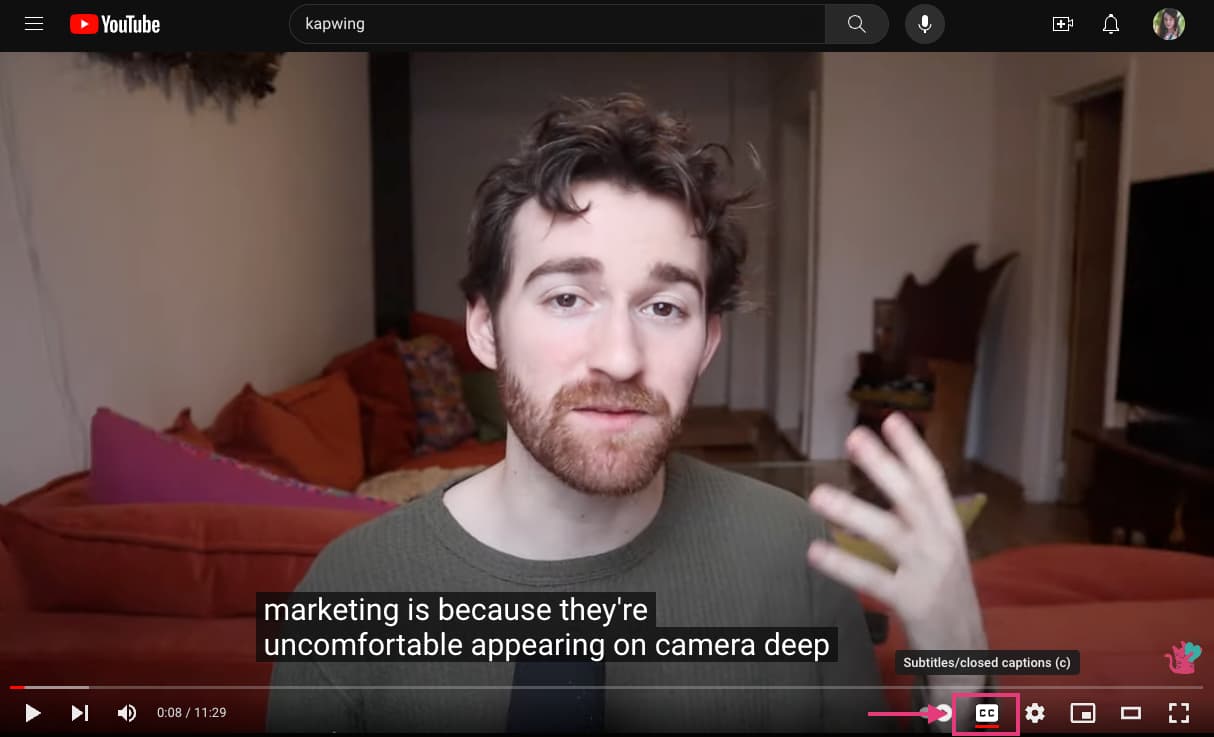
Note: If the video you’re watching doesn’t have the CC button or if it’s grayed out, that means closed captions have not been enabled for that video. Jump ahead to see how to translate YouTube video subtitles with Kapwing or dub the video.
Step 2: Open the video settings menu
Click on the little settings wheel icon to open the video settings menu. Here, you’ll see the “Subtitles/CC” settings option, along with other playback settings. Unless the channel owner added their own subtitles to YouTube, this will likely say “[Language] (auto-generated).”
Go ahead and click on that.
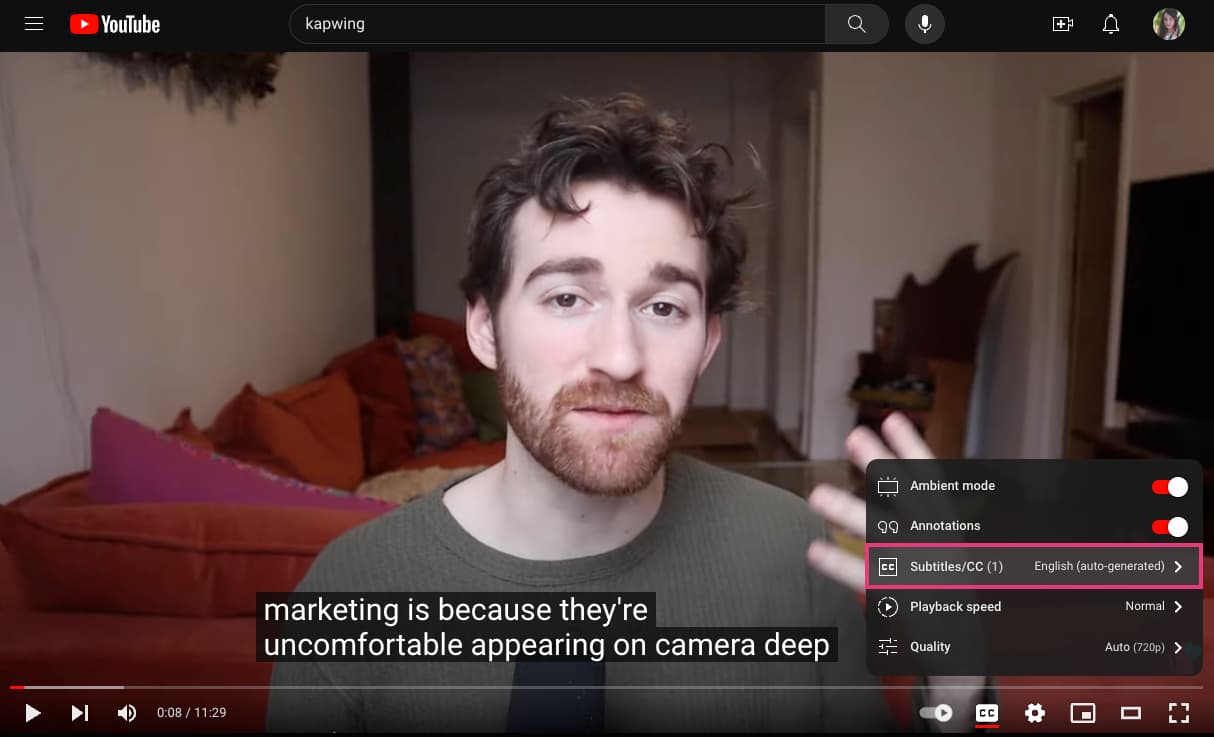
Step 3: Open the auto-translate feature
Click on “Auto-translate” to open the language selection menu.
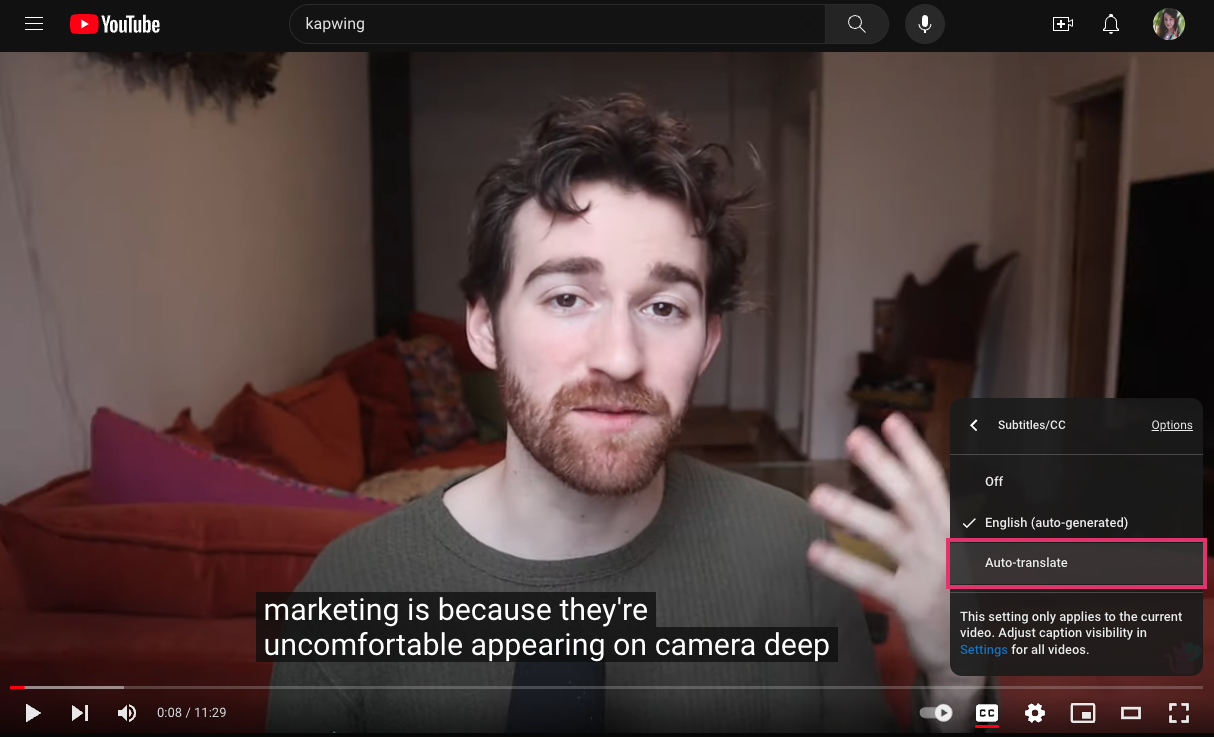
Step 4: Select your language
YouTube’s autotranslation feature is powered by Google, so there are over 120 languages to choose from. Scroll down until you find the language you want to translate the video into. For this example, we’re translating a video into Spanish.
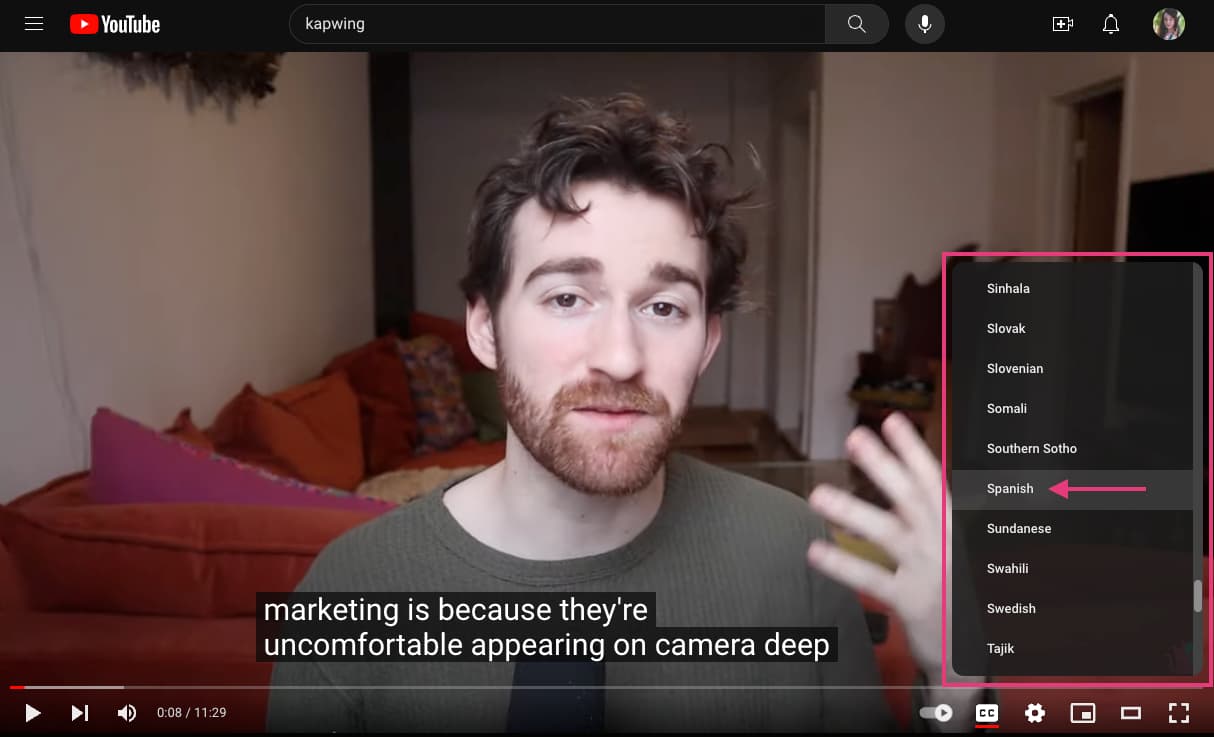
Once you select the language, you’ll see the subtitles on the screen immediately change to the new language.
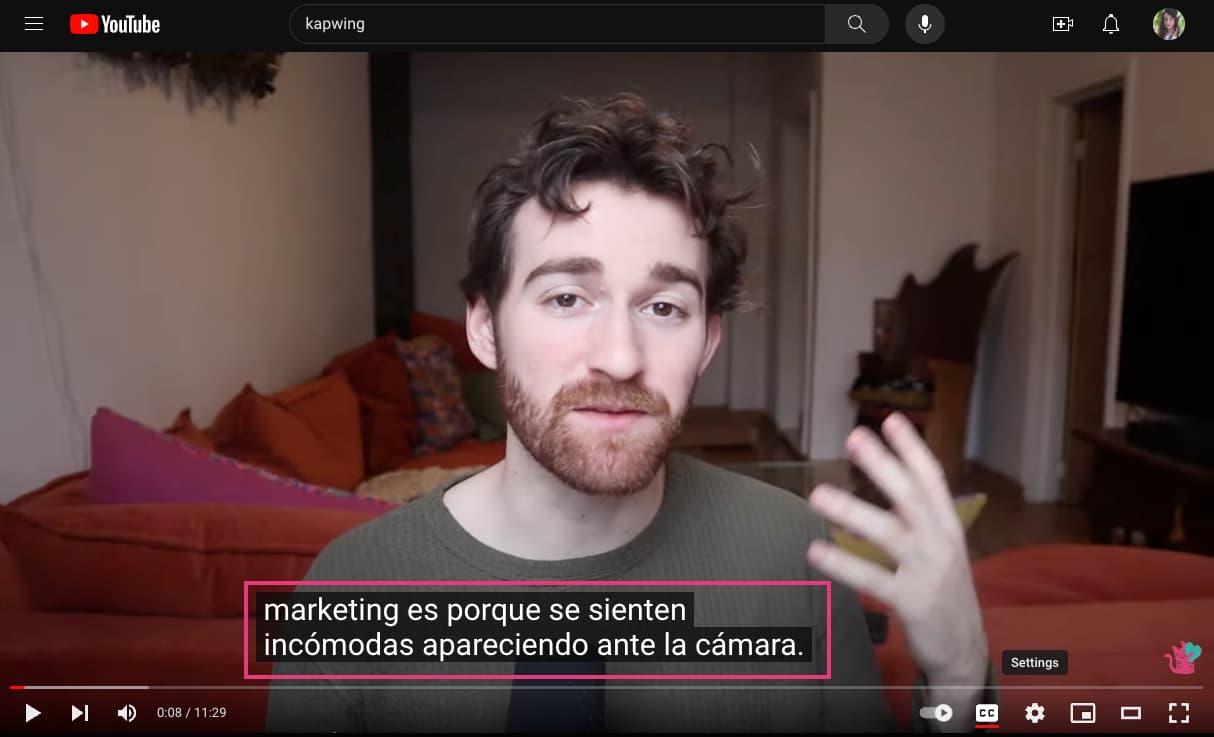
And that’s it!
Sit back, relax, and watch the rest of the video subbed in the language of your choice.
How to translate YouTube Videos with an auto-subtitling tool
If the video you want to translate doesn’t have closed captioning enabled on YouTube, you can still translate the video’s subtitles! There’s just a few extra steps involved.
Here’s how to translate a YouTube video’s subtitles using Kapwing, an online video editor perfect for YouTube:
Step 1: Upload the YouTube video to Kapwing
Copy the link to the YouTube video you want to translate. Then head over to Kapwing.com and open a new project.
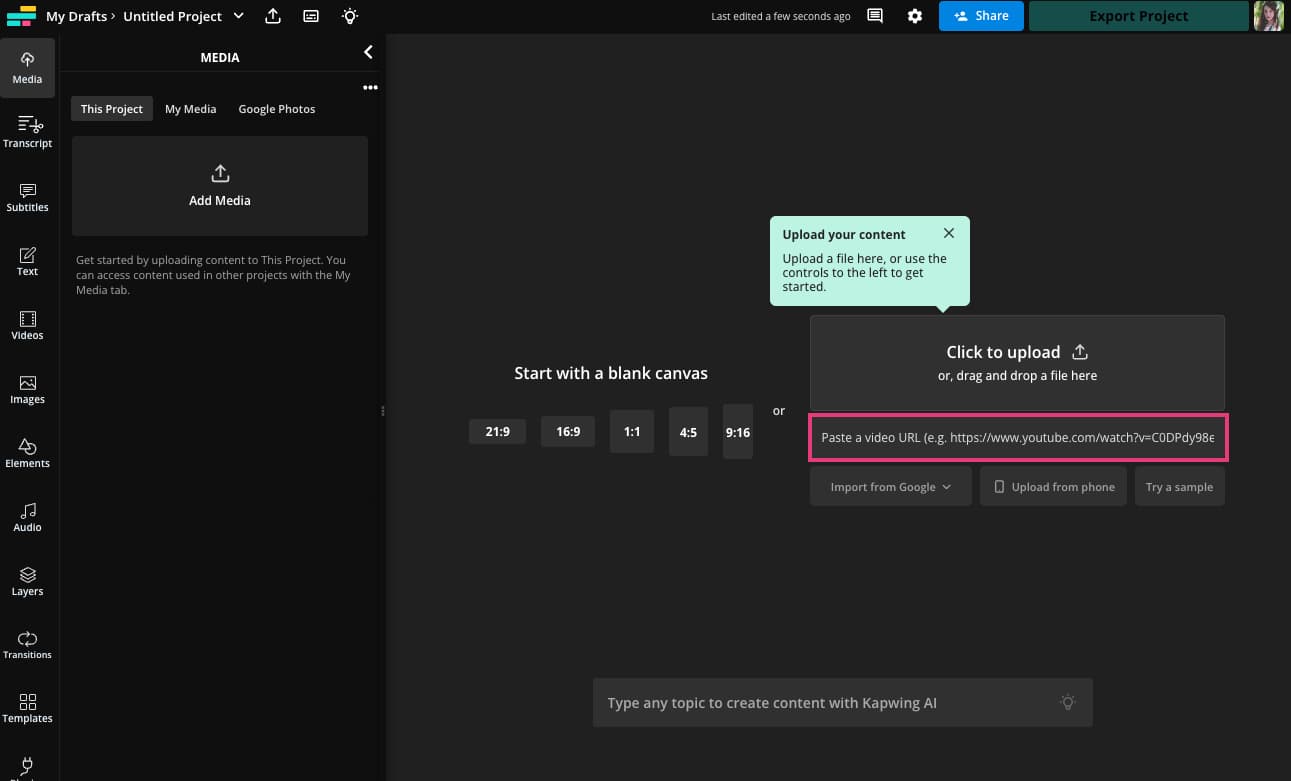
Paste the video link into the upload window.
Step 2: Open the auto-subtitles tool
Once your video has been uploaded, you’ll see the playback preview appear in the studio and a new video layer appear in the timeline below.
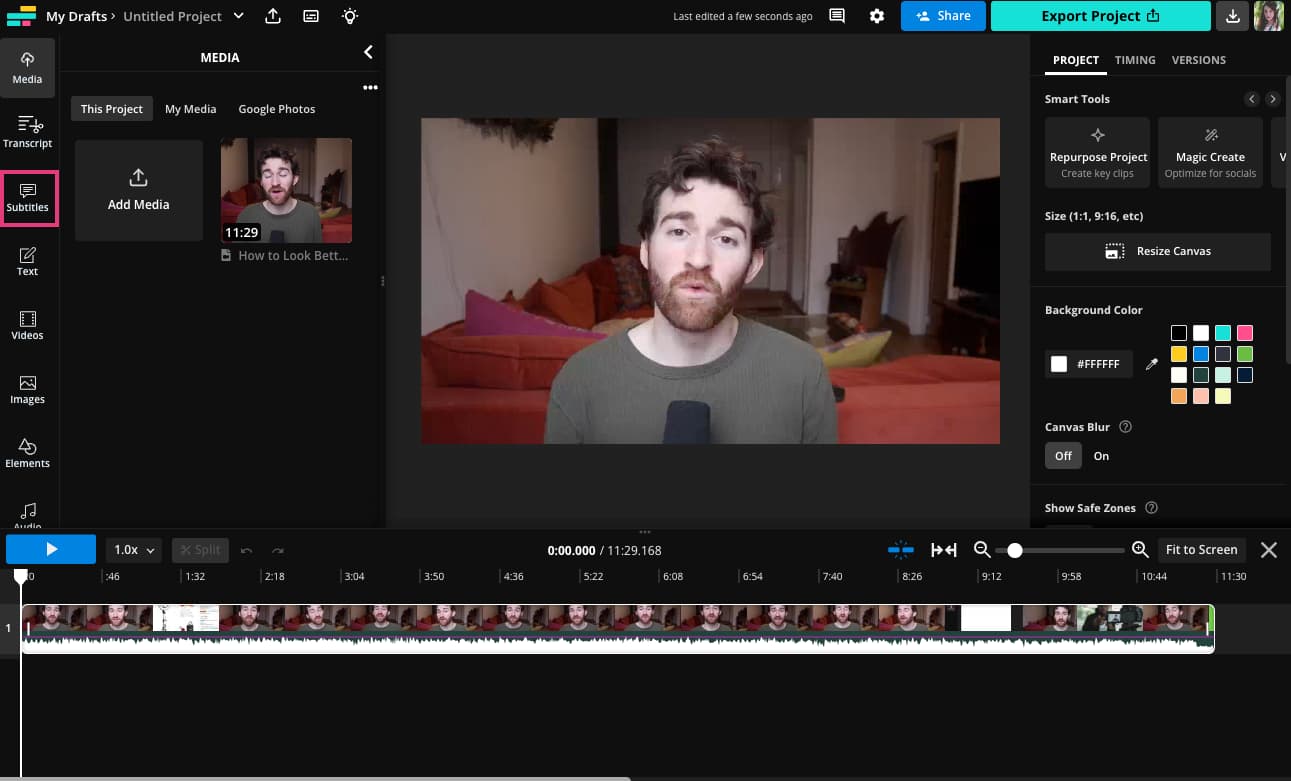
Click on the “Subtitles” tab in the left-side tool menu. This is where you can add video subtitles manually or auto-generate them based on your video's audio.
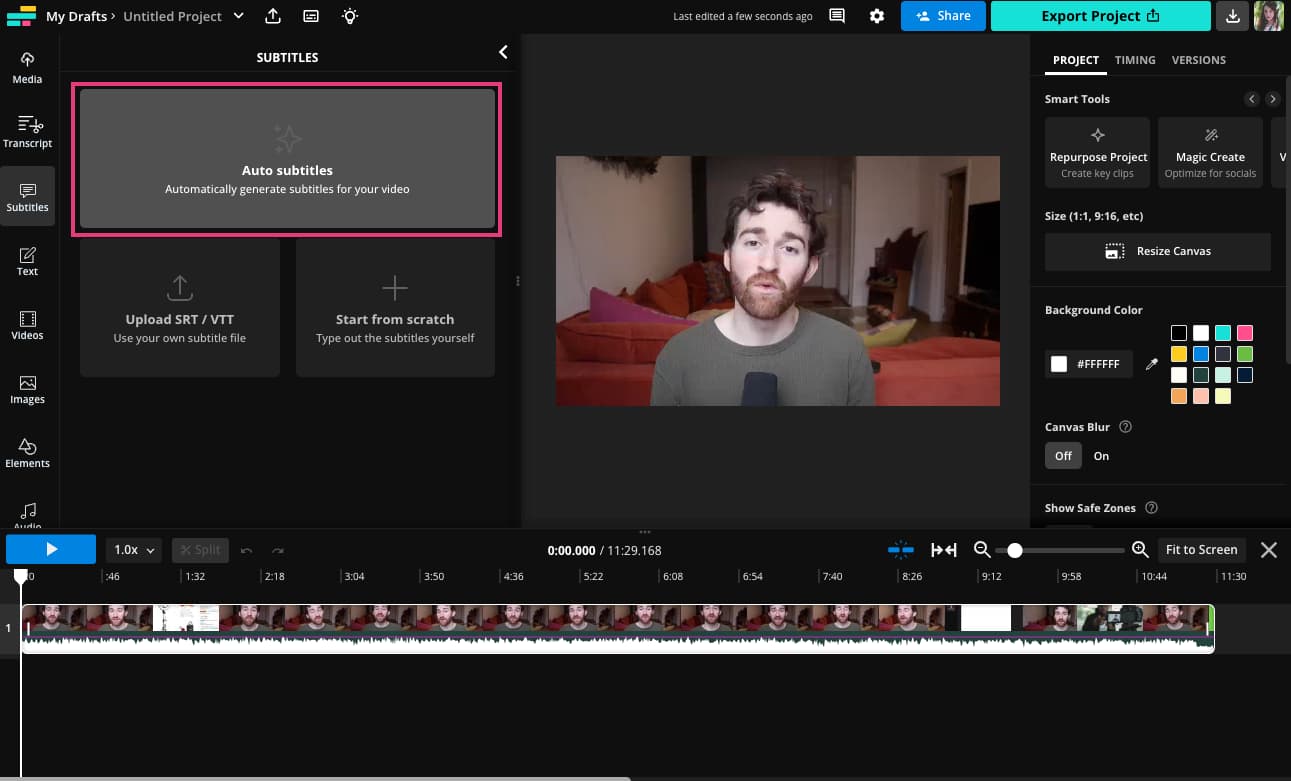
Choose “Auto subtitles.”
Step 3: Select your subtitle language
When you open the subtitle generator, there are two language options: “Original language” and “Translate video to.”
Make sure the original language is set to the correct language, then click the drop down menu under the “Translate video to” option to select the language for your translated subtitles.

Kapwing offers over 70 subtitle languages to choose from. Scroll down and select the language of your choice. For this example, we’re once again translating the video into Spanish.
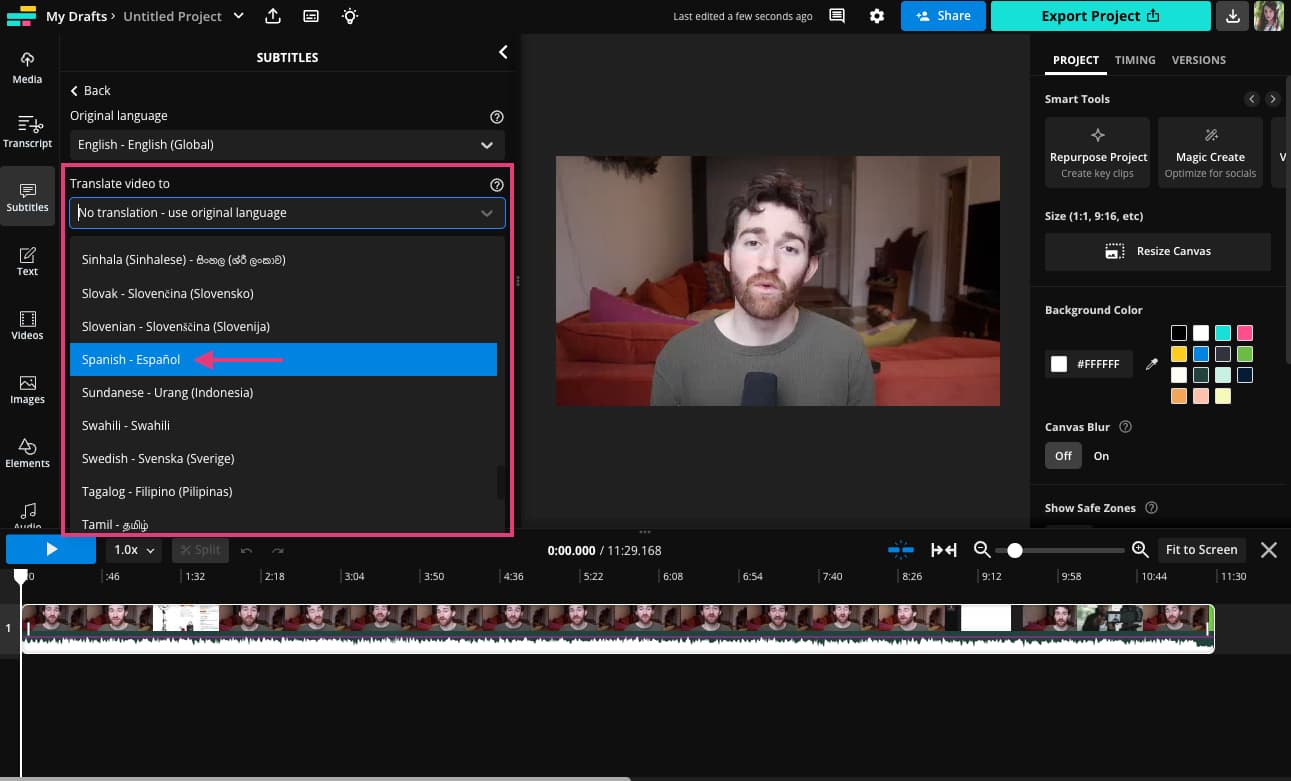
Click on the language to select it then hit the “Auto Subtitle” button to start generating your translation. Depending on the length of your video, this may take up to a few minutes to generate.

Once it’s ready, you’ll see a new subtitles layer appear in the timeline and a subtitles editing window appear to the right of the video preview.
Watch back the video with your new translated subtitles in Kapwing or export and watch elsewhere—you can share with friends, upload to a video platform, or just save to your own device for future reference.
How to dub a YouTube video into a different language
If you want to listen to a YouTube video in a different language in addition to translating the subtitles, you can dub over it with AI-powered voice generation.
Here’s how to dub a YouTube video using Kapwing:
Step 1: Translate the video’s subtitles
This first step is actually just steps one through four of the previous section on how to translate a YouTube video with Kapwing’s subtitles generator. Jump back here for a quick refresher.
Step 2: Open the dubbing tool
Click on the Smart Tools dropdown menu in the top right corner of the subtitle editor.
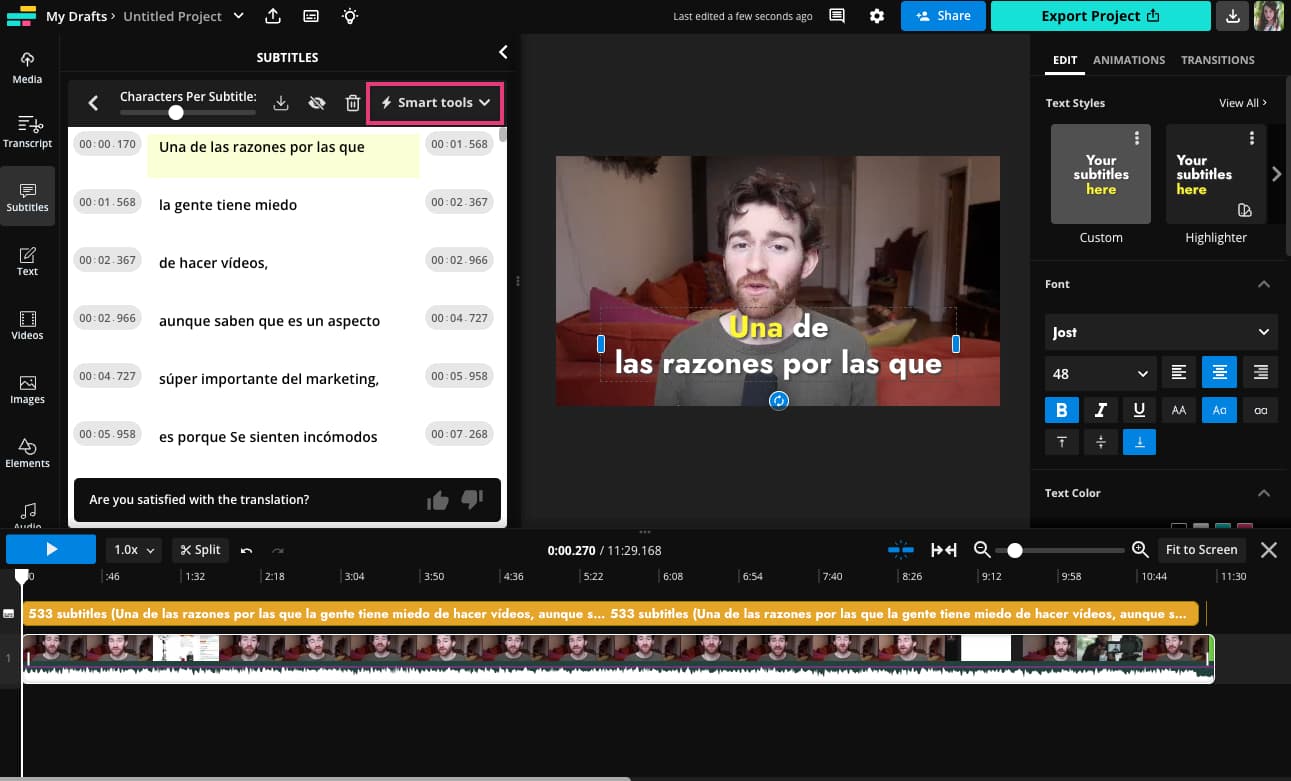
There are several options here. Choose “Dub Video.”

This will open the dubbing tool, which should have the language you wish to translate your video’s audio to already selected (it will be the same as the language you translated the subtitles to).
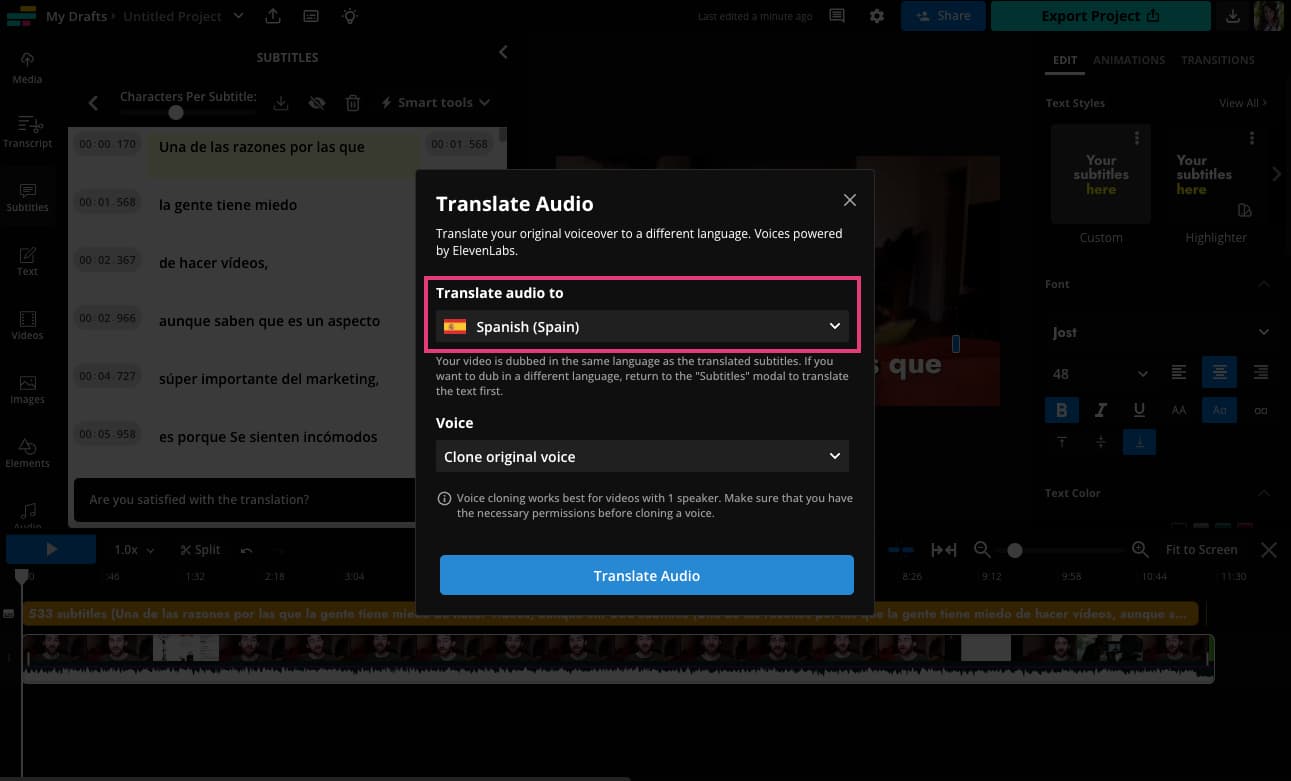
Step 3: Choose your dubbing voice
Click on the voice dropdown menu to select which AI-generated voice you want for your dubbed audio.
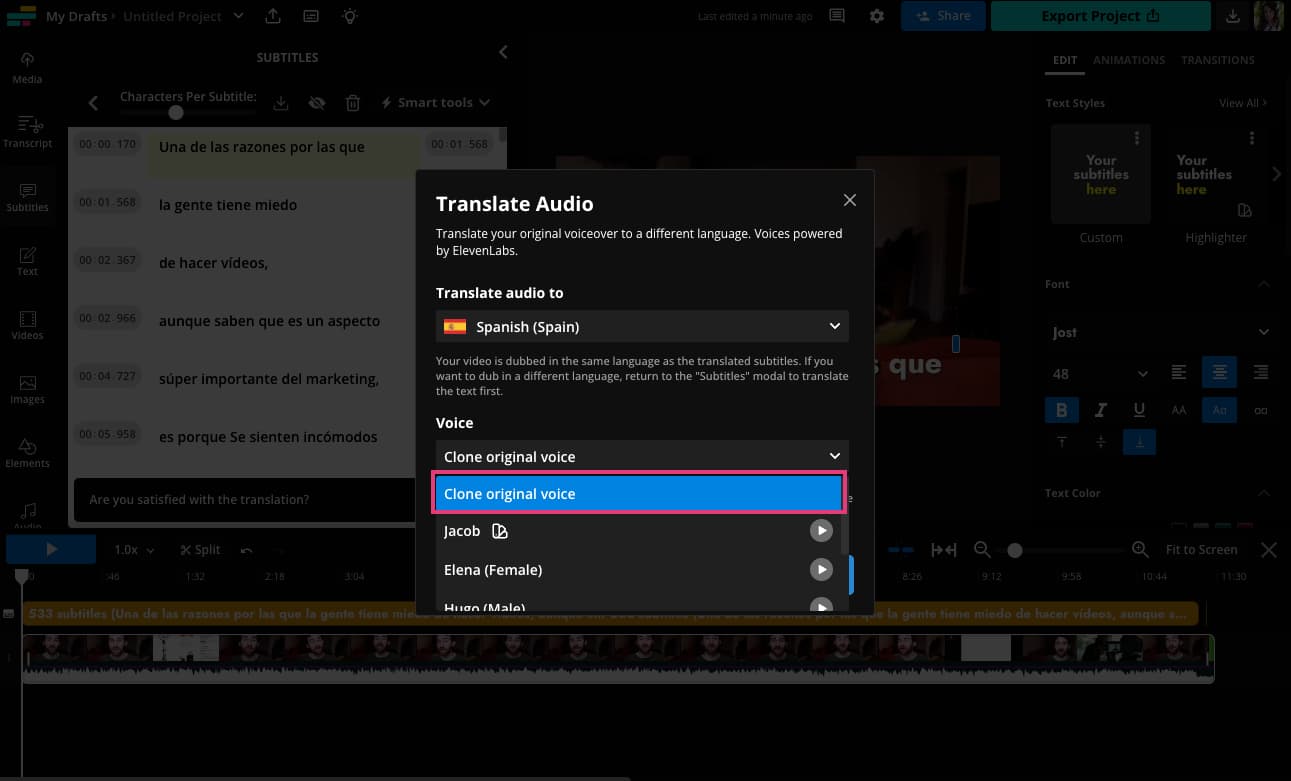
You can choose to clone the original voice (recommended), use one of your pre-saved voice clones if you have any (these will have a small tag icon to denote them), or choose from the preset voices provided by Kapwing.
Step 4: Translate your YouTube video
Once you’ve chosen the voice for your audio, hit “Dub Video.” Depending on the length of the video, this process could take up to a few minutes to complete.
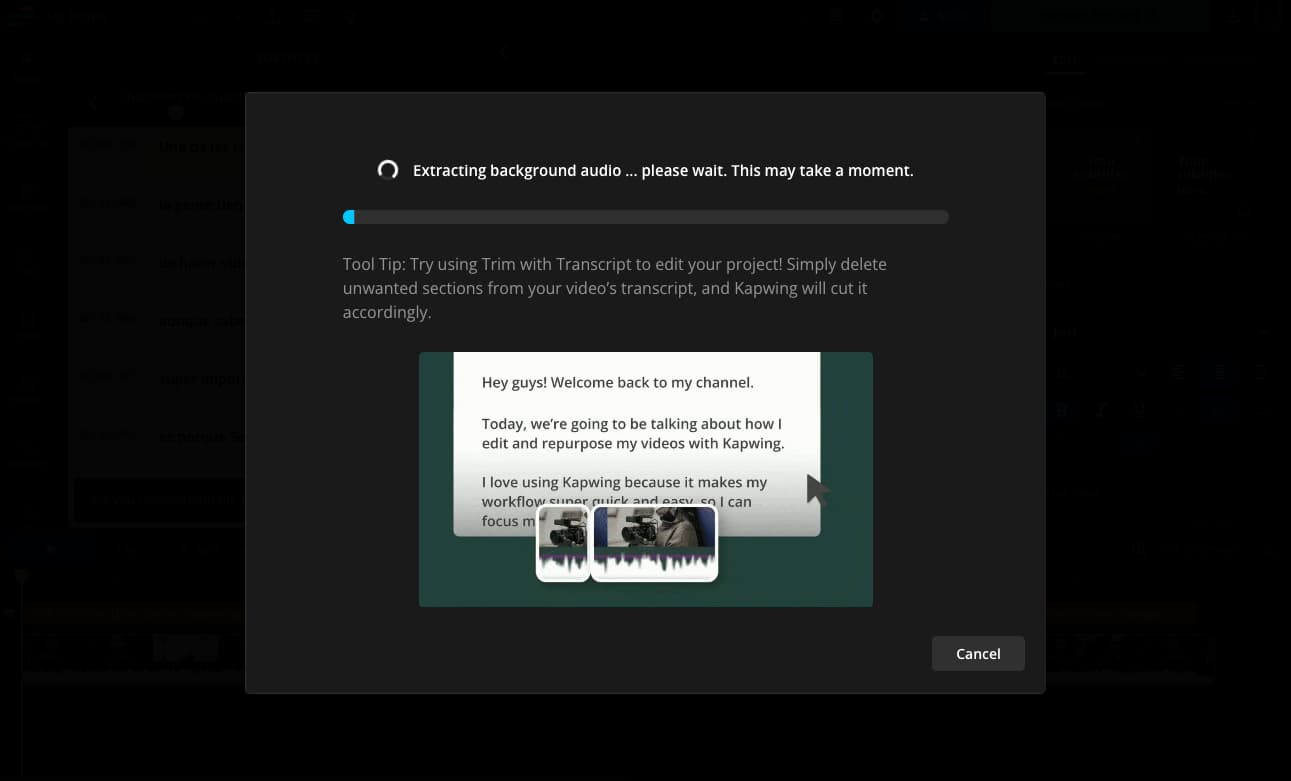
When it’s finished, you’ll see a new audio layer in the timeline and the original audio will be muted. Hit play to listen back to the video with the new dubbed audio. As with your translated subtitles, you can watch the whole video in Kapwing or export for a higher resolution playback.
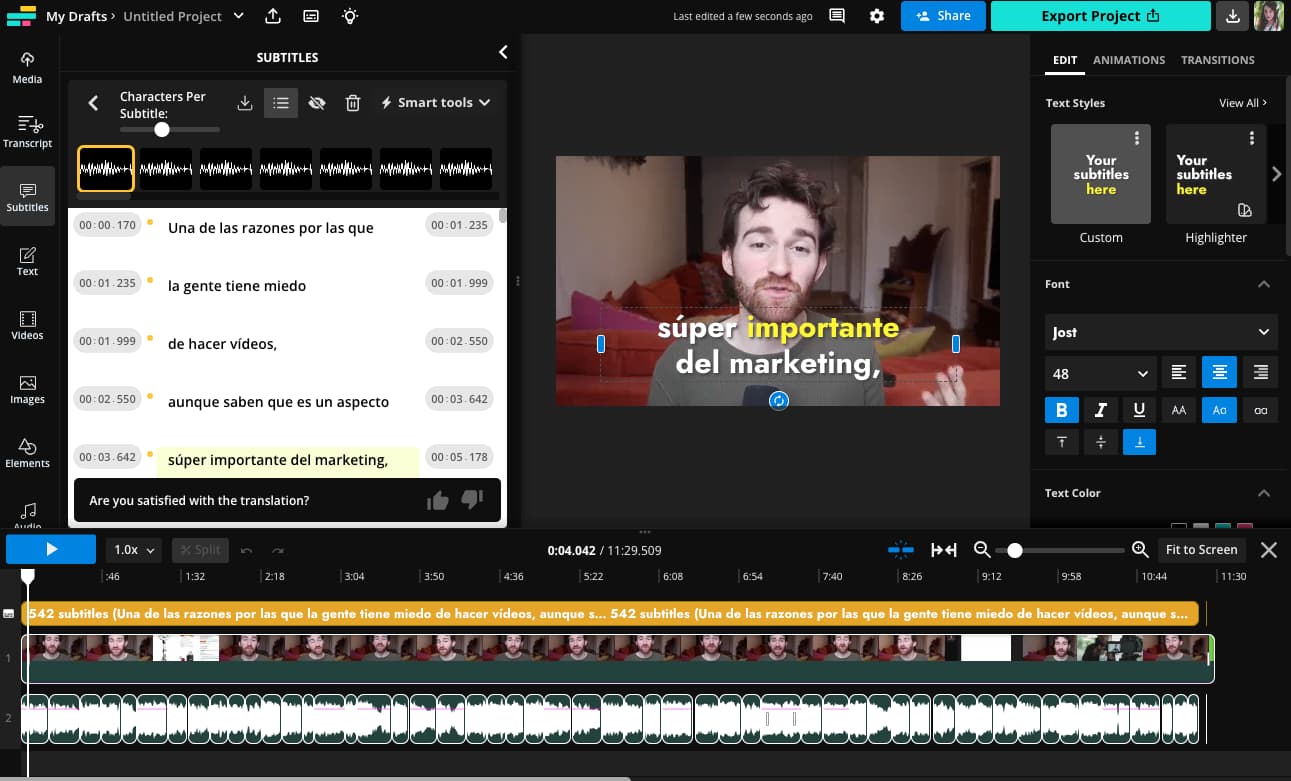
If you’re translating your own videos to share on YouTube or elsewhere, you can make any other changes right there in the editor—customize the subtitle font and styling, add new title cards and overlays, or even repurpose the video into clips for social media.
Rinse and repeat with any other YouTube videos you want to translate.
📚 Learn more:









